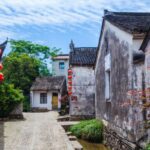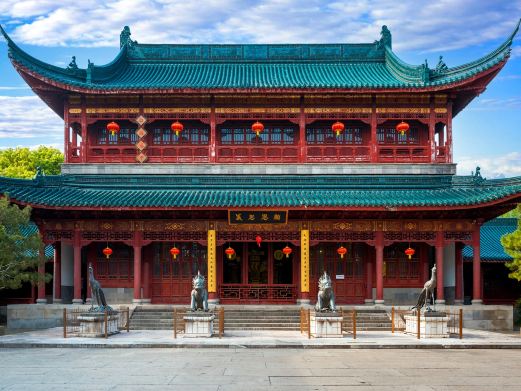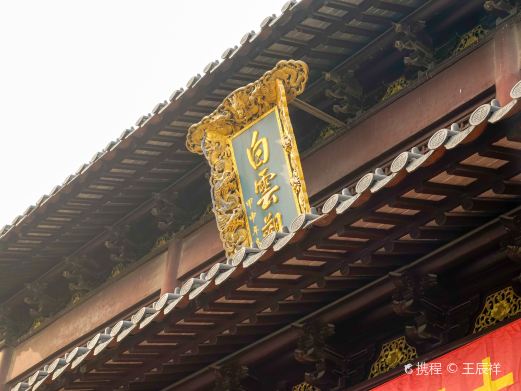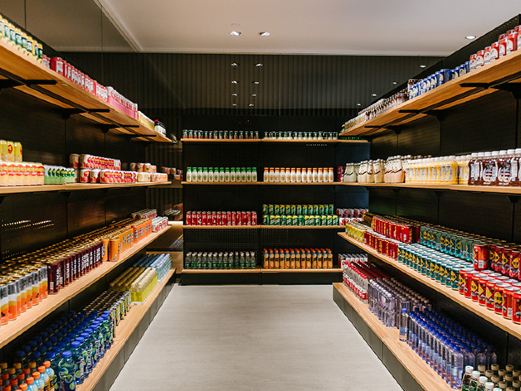Jilong Mountain, formerly known as Ting Mountain and also called Fengtai Mountain, is located among the mountains 25 kilometers northwest of the county town. It stands at an elevation of 240 meters. According to the ‘Taiping Huanyu Ji’, it is recorded that: ‘When Malhu initially sank, an old mother ascended this mountain with a chicken cage, and was transformed into stone; today there is a stone on the mountain shaped like a chicken cage, hence the name.
‘ Due to its continuous mountain ranges crowned with huge boulders resembling a lotus, it is considered a ‘miracle of the prefecture’. The mountain features attractions such as the ‘Sanqing Hall’, ‘South Heavenly Gate’, ‘Slit Sky’, ‘Karst Cave’, and ‘Hundred-Year Gap’. It is said that at the end of the Eastern Han Dynasty, the eminent monks Jin Fo, Jin Qian, and Jin Kun, brothers, achieved enlightenment and became Buddhas here. Subsequent generations built the ‘Sanqing Hall’ in their honor and revered them as the ‘Three Mao Ancestors’, with statues enshrined in the hall. Inside hangs a large bell weighing a thousand jin (c. 500 kg); and a large drum with a diameter of nearly 2 meters. On the days of the new and full moon, people from various places come to worship at the mountain, making it known as the ‘Little Jiuhua of the North’. Throughout the ages, many poets have left their inscriptions. Among them, Li Bai’s poem ‘Li Yang Strongman Qin General’s Name Boundary Qi Song’ says: ‘The ancient Li Yang Prefecture has turned into a vast river. The mountains and rivers are melancholic, and the dragon and tiger keep their secrets. After thousands of years of accumulation and release, the wind and clouds are extraordinary. A diligent general was born with the divine strength of a hundred men. ‘ Xu Hun’s poem ‘Inscription on Qin’s Mountain Residence in Li Yang’ says: ‘At the age of twenty, he knew the military in the Yu Lin, and in middle age, he secretly recognized the heart of Zi Fang. The blue eagle leaves the border, and the dust is quiet; the white crane returns to the hometown, and the Chu river is deep. In spring, the wine bottle floats with the aroma of medicine, and in the evening, the chess set is carried with the shade of the pine. There are many places to go up Jilong Mountain, and it belongs to the yellow essence that cannot be found.’ Zhu Yuanzhang’s poem ‘Climbing Jilong Mountain’ says: ‘After hunting in the western mountains and holding the flag, one mountain stands out among ten thousand mountains. The towering boulders are like the pillars of heaven, supporting the old sky, and the sky knows itself.’ At the beginning of the Tang Dynasty, there were many temples on the mountain and at its base. Later, due to wars, many of the original buildings were destroyed. After the founding of the People’s Republic of China, there were still 37 temples remaining, with more than a hundred Buddha statues of various sizes, and dozens of monks. During the ‘Cultural Revolution’, the temples and Buddha statues were destroyed. After 1978, the county government allocated funds for repairs, and the road from the foot to the top of the mountain was repaved with stone slabs and equipped with steel pipe railings. Fenglin Zen Temple was also renovated, with seven Buddha statues sculpted inside. There is an existing stele ‘Fenglin Zen Temple Inscription’, and the temple receives many visitors and worshippers every year. Opening hours are all year round, open all day, with specific opening times subject to on-site announcements at the scenic spot. Service facilities include parking lots: [coach parking area, car parking area], with the number of parking spaces subject to display at the scenic spot; 00:00 to 23:59.Jilong Mountain National Forest Park
Jilong Mountain, formerly known as Ting Mountain and also called Fengtai Mountain, is located among [...]









